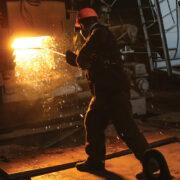Wallen Lawson worked as a territory manager for two years for PPG Architectural Finishes, Inc. (PPG), a paint manufacturer. Lawson sold and stocked PPG paint products in Lowe’s home improvement stores in Southern California. PPG used two metrics to evaluate Lawson’s performance: his ability to meet sales goals, and his rapport with Lowe’s staff and customers, which was evaluated and scored by his direct supervisor, Clarence Moore. On the first evaluation not attended by Moore, Lawson received the highest possible rating. Lawson, however, frequently missed his monthly sales targets. In spring 2017, PPG placed Lawson on a performance improvement plan.
In the same period, Moore began ordering Lawson to intentionally mistint slow-selling PPG paint products (i.e., tint the paint to a shade the customer had not ordered). Lowe’s would then be forced to sell the paint at a deep discount, enabling PPG to avoid buying back what would otherwise be excess unsold product. Lawson did not agree with this mistinting scheme and filed two anonymous complaints with PPG’s central ethics hotline. He also told Moore directly that he refused to participate. The complaints led to an investigation. PPG eventually told Moore to discontinue the practice, but Moore Re4emained with the company, where he continued to directly supervise Lawson and oversee his evaluations. By this time, Lawson’s evaluation scores have been low. Some months later, Lawson was fired for poor performance.
Lawson sued, alleging that PPG fired him because he blew the whistle on Moore’s fraudulent mistinting practices. PPG asked the court to dismiss the case, saying that PPG had shown that it had a legitimate, non-retaliatory reason for the firing, namely, Lawson’s poor performance. In dismissing the case, the trial court concluded that Lawson had failed to produce sufficient evidence that PPG’s stated reason for firing Lawson was pretextual (pretend reason to cover up the real reason). Lawson appealed.
In the court of appeal, Lawson argued that all he had to show was that his whistleblowing activity was “a contributing factor” in his dismissal, and that he does not have to prove that PPG’s stated reason was pretextual. The federal court of appeal asked the California Supreme Court to clarify the law.
Under California law, a “whistleblower” is an employee who discloses information to a government or law enforcement agency, or to a person with authority over the employee, or to another employee with authority to investigate, discover, or correct the violation or noncompliance, or who provides information to or testifies before a public body conducting an investigation, hearing or inquiry, where the employee has reasonable cause to believe that there is
1) a violation of a local, state or federal law; or
2) an issue related to unsafe working conditions or work practices in the employee’s employment or place of employment.
A whistleblower may also be an employee who refuses to participate in an activity that would result in a violation of law.
An employer may not retaliate against an employee for exercising their rights as a whistleblower. The law requires whistleblowers to show that retaliation was a “contributing factor” in their termination or demotion. Even if the employer had a genuine, non-retaliatory reason for its adverse action, the employee only has to show that the employer also had at least one retaliatory reason that was a contributing factor in its decision to fire or demote an employee.
The California Supreme Court ruled that where the employee has shown, “by a preponderance of the evidence,” that retaliation for their protected activities was a “contributing factor” in the termination, the employee need not prove that the employer’s stated legitimate reason is a pretext for discrimination or retaliation.
Once the employee has shown that the employer also had at least one retaliatory reason that contributed in its decision to fire the employee, the employer must then demonstrate, “by clear and convincing evidence,” that it would still have fired the employee even if they had not engaged in protected activity. This analytical approach is favorable to an employee who seeks to prove that their termination is unlawful retaliation.
* * *
The opinions, beliefs and viewpoints expressed by the author do not necessarily reflect the opinions, beliefs and viewpoints of the Asian Journal, its management, editorial board and staff.
* * *
The Law Offices of C. Joe Sayas, Jr. welcomes inquiries about this topic. All inquiries are confidential and at no-cost. You can contact the office at (818) 291-0088 or visit www.joesayaslaw.com. [For more than 25 years, C. Joe Sayas, Jr., Esq. successfully recovered wages and other monetary damages for thousands of employees and consumers. He was named Top Labor & Employment Attorney in California by the Daily Journal, selected as Super Lawyer by the Los Angeles Magazine for 11 years, and is a past Presidential Awardee for Outstanding Filipino Overseas.]
(Advertising Supplement)







